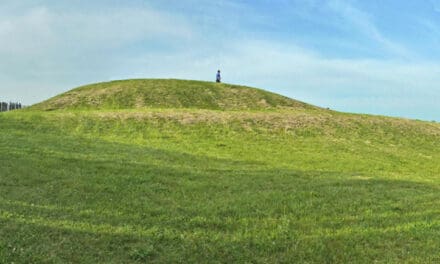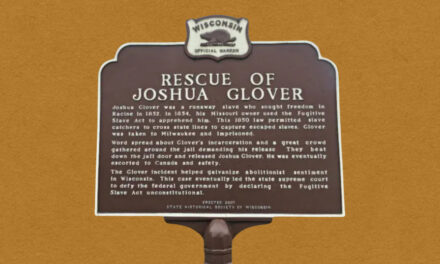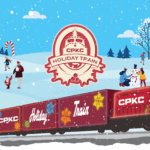There was a time, as recently as the middle of the 1970s, that going East to West across the Northern part of the state took almost twice as long as it does today. It was more than an inconvenience for travelers, it was a barrier to jobs and economic growth for the region.
Thankfully, that’s history.

Wisconsin State Highway 29, commonly known as Highway 29, has a storied history of it’s own that spans almost a century. This major east-west roadway cuts across the northern third of the state and has played a vital role in connecting communities across Wisconsin, facilitating commerce, and supporting the state’s transportation needs.
The initial construction of Highway 29 began in the 1920s, and the road now stretches for approximately 308 miles. The highway passes through numerous iconic cities and towns, including Green Bay, Wausau, Chippewa Falls, and Menomonie, among others.
Significant development projects have improved and expanded WIS 29 over the years. One notable milestone in its history occurred during the 1960s and 1970s, when a substantial stretches of the highway were transformed into a four-lane divided road. This and subsequent expansions enhanced traffic flow, efficiency, and safety along the route.
State Highway 29 has played a significant role in shaping the economic landscape of the regions it traverses. The highway’s accessibility and connectivity have fostered economic growth and attracted key employers to various cities and towns along its route.
Cities like Green Bay owe of much their economic success to the presence of WIS 29. Green Bay, home to the historic Lambeau Field and the storied Green Bay Packers, benefits from the highway’s proximity, facilitating tourism and commerce, with major employers like Schneider National Inc., Prevea Health, and Georgia-Pacific contributing to regional prosperity.
In Wausau, WIS 29 serves as a critical transportation link, supporting the city’s diverse economy. Wausau is a hub for healthcare, with institutions like Marshfield Clinic Health System and Aspirus contributing to the local economy and providing employment opportunities. Moreover, manufacturing and paper production play a vital role in the region’s economy, with companies like Wausau Paper and Marathon Electric supplying jobs and stimulating economic growth.
Chippewa Falls, boasts a thriving manufacturing sector. Employers such as Mason Companies, Advanced Laser Machining, and Cardinal CG are among the key contributors to the local economy.
Menomonie also benefits from the highway. Educational institutions like the University of Wisconsin-Stout bring both students and jobs to the area.
Highway 29 connects by a variety of historic and cultural sites that offer visitors a glimpse into Wisconsin’s rich heritage. As travelers drive along the highway, they can explore these notable landmarks and immerse themselves in the state’s history and culture.
One such site is the National Railroad Museum, located in Green Bay. Situated just off the route of WIS 29, this museum showcases the significance of the railroad industry in Wisconsin and the United States. Visitors can explore an array of historic locomotives, artifacts, and exhibits that highlight the impact of rail transportation on the region’s development.
In Wausau, the Leigh Yawkey Woodson Art Museum is a cultural gem worth visiting. Although it is situated a short distance from Highway 29, it offers a prominent display of artwork, particularly focusing on avian-inspired pieces. The museum’s annual “Birds in Art” exhibition attracts visitors from far and wide, celebrating the beauty and significance of avian-themed art.
Travelers can discover the Chippewa Valley Museum in Eau Claire. This remarkable institution delves into the rich history of the Chippewa Valley region through engaging exhibits, artifacts, and educational programs. The museum offers a deeper understanding of the area’s Native American heritage, early European settlements, and significant industrial contributions.
Right along the highway in Menomonie stands the Mabel Tainter Center for the Arts, an architectural marvel that reflects the area’s cultural legacy. This historic theater, built in the late 19th century, showcases stunning Victorian-era design and hosts a variety of performances, including plays, concerts, and film screenings. Its intricate woodwork and ornate detailing make it a must-visit attraction for those passing through Menomonie.
These are just a few highlights of the historic and cultural sites that can be explored along the HWY 29. Whether it’s museums, art centers, or architectural wonders, these landmarks offer travelers a chance to connect with Wisconsin’s past and appreciate its vibrant cultural heritage.
In recent times, WIS 29 has seen further advancements. Bypasses have been constructed to ease congestion in urban centers. Notably, the Green Bay Bypass, completed in 2008, redirects traffic around the city, reducing travel times and enhancing safety. Similarly, the Wausau Bypass, finished in 2012, provides a smoother and more efficient route for travelers.
Maintaining and improving Highway 29 reflects Wisconsin’s commitment to its transportation infrastructure. The state’s highway infrastructure accommodates the agricultural, manufacturing and tourism industries that are the pillars of Wisconsin’s economy. Highway 29 is one of Northern Wisconsin’s most important roads. For many, it marks the point where ‘UpNorth’ begins.
















